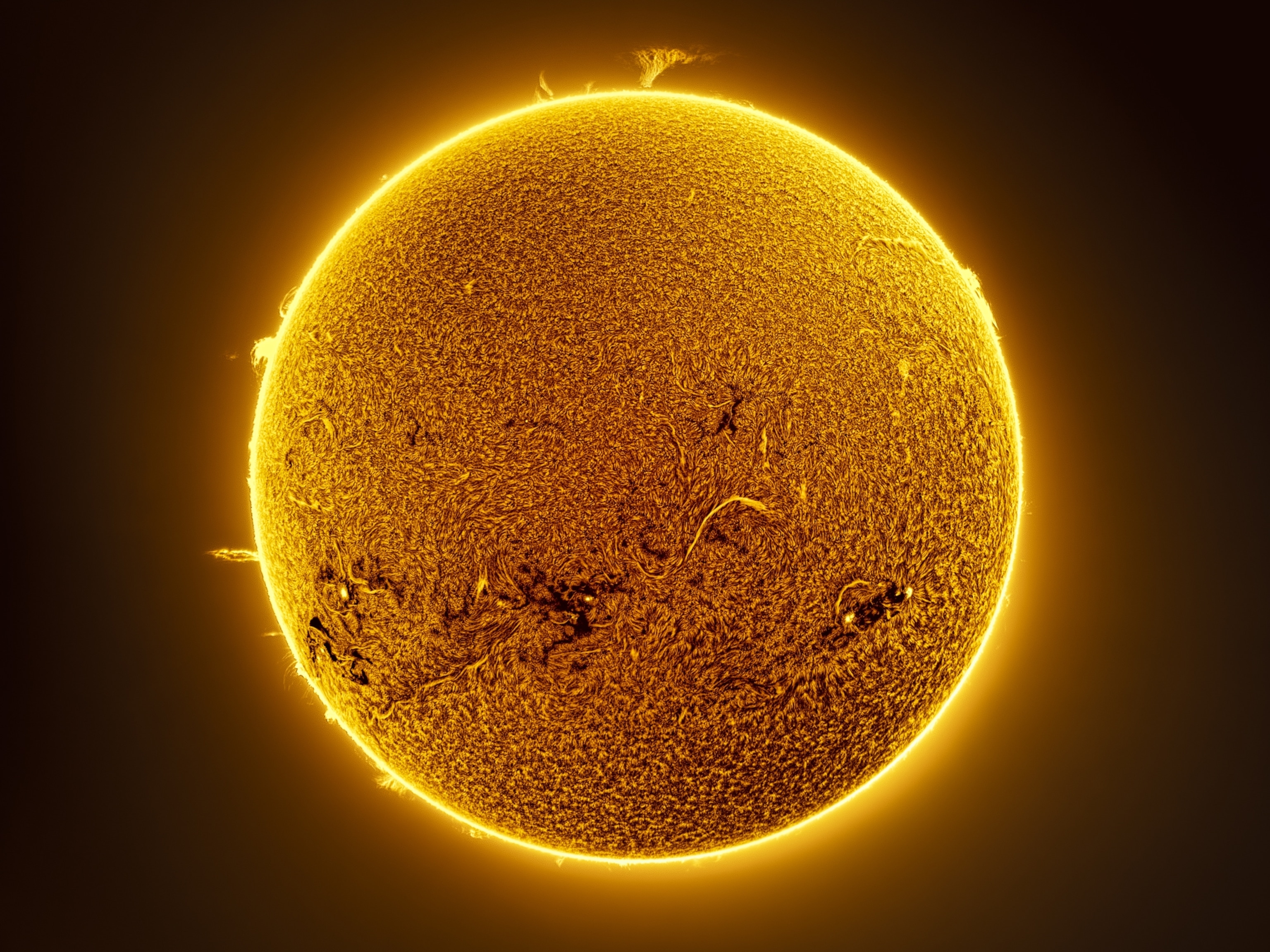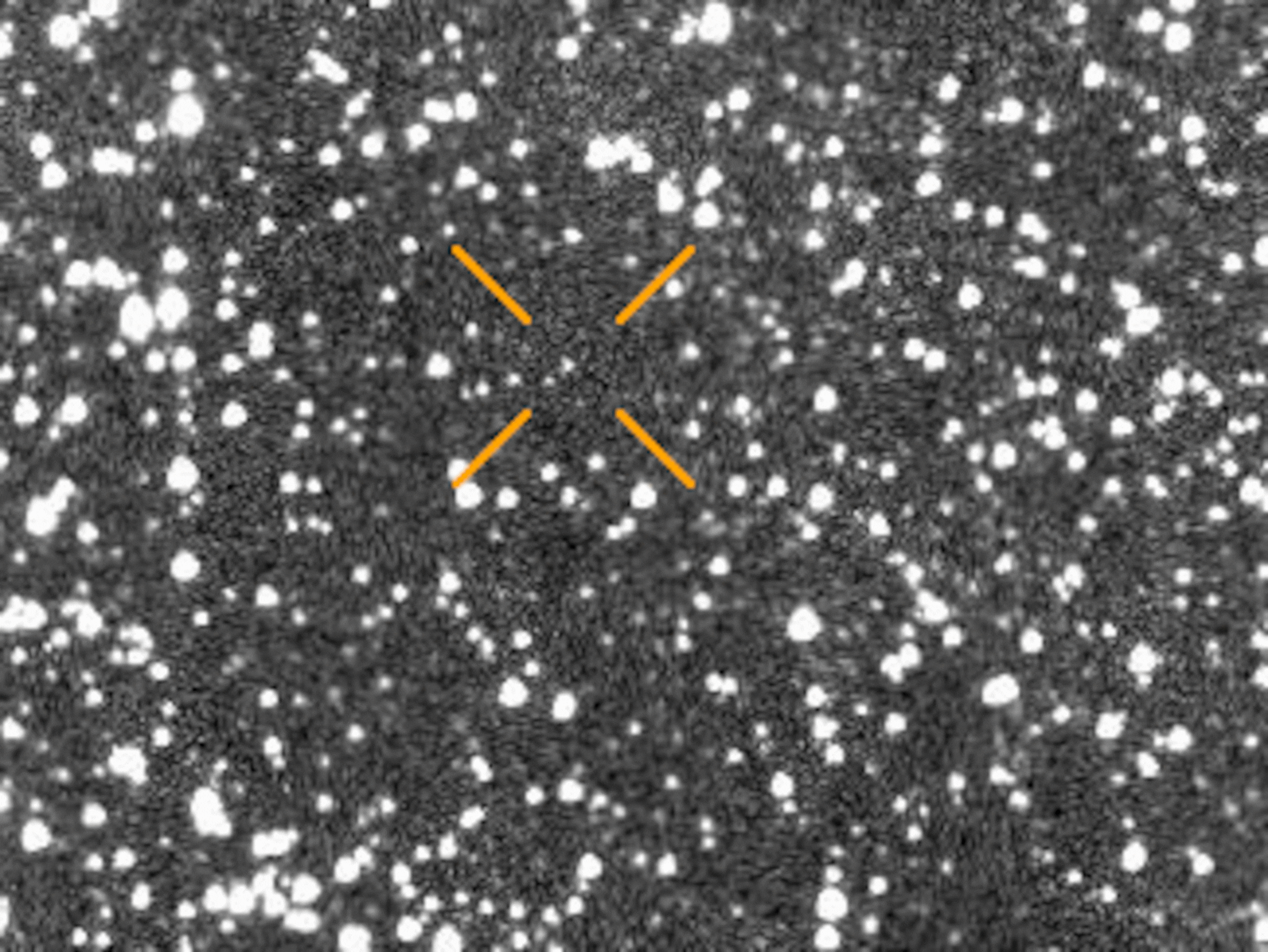
Oldest Material in Solar System Found
Discovery suggests exploding star kick-started our sun.
Pea-size minerals inside a meteorite are the oldest known material in the solar system, a new study says.
At 4,568.2 million years old, the minerals push back the birth of the solar system by as much as two million years—and suggests that an exploding star injected key materials into our system as it was being born, researchers say.
(Related: "Saturn's Rings as Old as Solar System, Study Says.")
The 3-pound (1.5-kilogram) parent meteorite, dubbed NWA 2364, was found in 2004 in Morocco and is believed to have originated from the asteroid belt between Mars and Jupiter.
But the tests reveal that telltale mineral lumps inside—called calcium-aluminum inclusions—are from a time before that asteroid belt existed. The minerals may have formed just after part of an interstellar gas and dust cloud, or nebula, had collapsed and formed our sun, as one sun-formation theory goes.
"Soon after the collapse of the solar nebula, matter started to condense as the temperature went down, and these inclusions started forming," said lead study author Audrey Bouvier, a research associate at Arizona State University's Center for Meteorite Studies.
Bouvier and co-author Meenakshi Wadhwa, also of Arizona State, measured ratios of lead isotopes—lighter-or-heavier-than-usual versions of an element—in a single "pristine" inclusion to uncover its birth date, she said.
"This revised age is between 0.3 and 1.9 million years older than previous estimates," she said, "making it the oldest on record."
(Also see "Oldest Rocks on Earth Discovered?")
Supernova Blasted Solar System Into Existence?
Two million years is a drop in the bucket in cosmic time, but it could have major ramifications for how scientists think the solar system was born.
Again, it comes down to isotopes—in this case, iron-60, which forms when massive stars go supernova, exploding at the ends of their lives.
Previous studies by other scientists of iron-60 isotopes in mineral inclusions in meteorites found that the inclusions had formed roughly two million years after what was thought to have been the birth of the solar system.
But because the solar system is now apparently up to two million years older than previously thought, the abundance of iron-60 estimated from the inclusions must be extrapolated back another two million years. Since iron-60 degrades by half every two million years, the revised initial quantity of iron-60 in the solar system is almost double previous estimates.
The only thing that could have put so much iron-60 into the nascent solar system, she added, is a nearby supernova.
If true, the finding supports a theory that a supernova seeded the ancient solar nebula with heavy metals and possibly triggered its collapse nearly 4.57 billion years ago.
(Related: "Supernova's Beginning Blast Seen in 3-D—A First.")
"I think it is important that people understand that this matter now present in our solar system has been brought in by other stars," Bouvier said.
"Massive stars may have exploded nearby but not close enough to destroy it—but instead brought in these key elements for planet formation and life."
For an insider's take on space news, check National Geographic's Breaking Orbit blog >>
The findings on the ancient solar system material were published August 22 in the journal Nature Geoscience.





